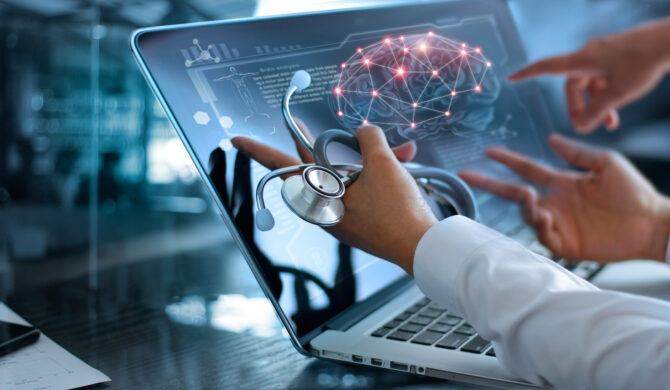
IoT enabling healthcare
By Shash Anand, SVP of product strategy, SOTI
Automation / Robotics Electronics IoT Medical Anand IoT medical SOTIPatient care becomes more data-driven
IoT devices can collect and share data on everything from body temperature to heart rate to blood pressure and more. In the past, healthcare organizations operated without this wealth of readily accessible data, but now they don’t have to. Data gathered through IoT devices leads to better health decisions and overall healthier patients. Here’s how.
Data preserves scarce resources
Doctors, nurses and hospital beds are in short supply these days and it’s more crucial than ever to preserve scarce resources. With ER patients waiting an average of 33 hours before getting a hospital bed in Canada, the role data plays in enabling healthcare organizations to allocate resources and funds where they are needed most cannot be overlooked.
For example, instead of sending a patient to a respiratory specialist for a routine appointment, a connected device can collect and transmit the necessary data to ensure the specialist is maximizing their time. This constant collection and transmission of patient data (sometimes called “store-and-forward” technology) allows doctors to better evaluate their patients before selecting care or treatment options. Should a patient be referred to a specialist? Is hospital admittance required? Or is the solution as simple as modifying a prescription which does not require the time and costs associated with a specialist or hospital bed.

Source: Adobe
Additionally, a recent SOTI survey found that 75% of surveyed healthcare IT professionals state that medical services’ quality will improve with more interconnected medical devices. It’s obvious, then, that even the experts are on the side of better and enhanced data management.
The same study found that 94% of those surveyed agreed digital patient recordkeeping will save time and improve information recording. It’s evident that healthcare workers themselves are also becoming cognizant of the benefits of optimized data management in healthcare.
Better healthcare through continuous monitoring
Using IoT to remotely monitor patients leads to deeper knowledge of historical trends and data. How many times has a doctor asked a patient whether they have experienced a particular symptom only to have the patient not accurately recall the date, time or details? By continuously capturing information in real-time, healthcare professionals can “go back in time” to see what occurred and when. This strengthens the level of care patients receive and eases the burden of data management for healthcare professionals.
With IoT, patient care can happen anywhere, anytime and strengthen overall patient health. Connected healthcare devices provide real-time monitoring and detection of issues. This means that doctors and healthcare experts receive more accurate and continuous data on key patient health metrics, allowing them to act instantaneously if needed.
Examples of IoT healthcare tracking include:
- Blood pressure or blood sugar exceeding a specified level
- Blood oxygen levels dropping below normal
- Heart rate and body temperature
- Heart rates for babies in utero
The fact is better data leads to better care.
IoT upholds the hippocratic oath
The ability of data to reinforce key aspects of the Hippocratic Oath is another reason that data strengthens the quality-of-care patients receive.
The SOTI study also showed that 86% of healthcare IT professionals are actively concerned with safeguarding private patient information. Clearly the need to prevent breaches is on the top of their minds. When IoT devices are configured with enhanced security measures, the Hippocratic tenant of respecting patient privacy is upheld by preventing data breaches. As such, when secure networks, updated firewall settings and updates to patch vulnerabilities are continually installed, it enforces the practice of the Hippocratic Oath.
Additionally, IoT data allows for real-time alerting and tracking, so when a patient’s vital signs exceed or fall below established thresholds, the information is relayed to a senior physician who can provide expert guidance. This enables physicians to call in colleagues when the skills of others are needed, once again in line with the principals of the Hippocratic Oath.
The more data IoT healthcare devices collect, the better decisions doctors and patients can make regarding care. This, in turn, helps patients lead healthier, happier and longer lives. Data driven healthcare whether in the form of apps or smart hospitals is here – and patients are better for it.
________________________________
As Senior VP of Product Strategy at SOTI, Shash Anand oversees the company’s evolution from a single product centred around Mobile Device Management (MDM) to an integrated platform that solves many of the challenges around Enterprise Mobility Management (EMM) and Internet of Things (IoT) management.
